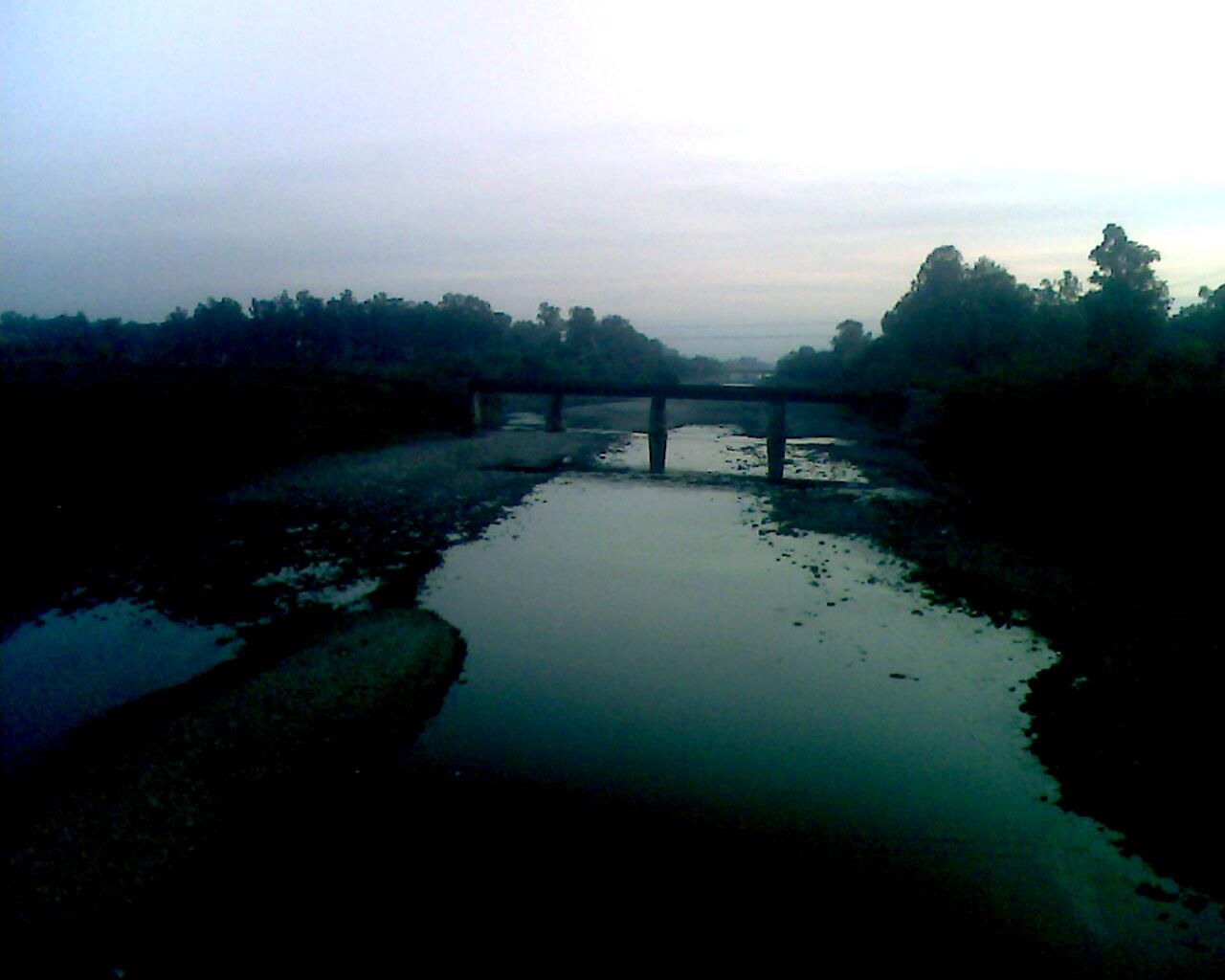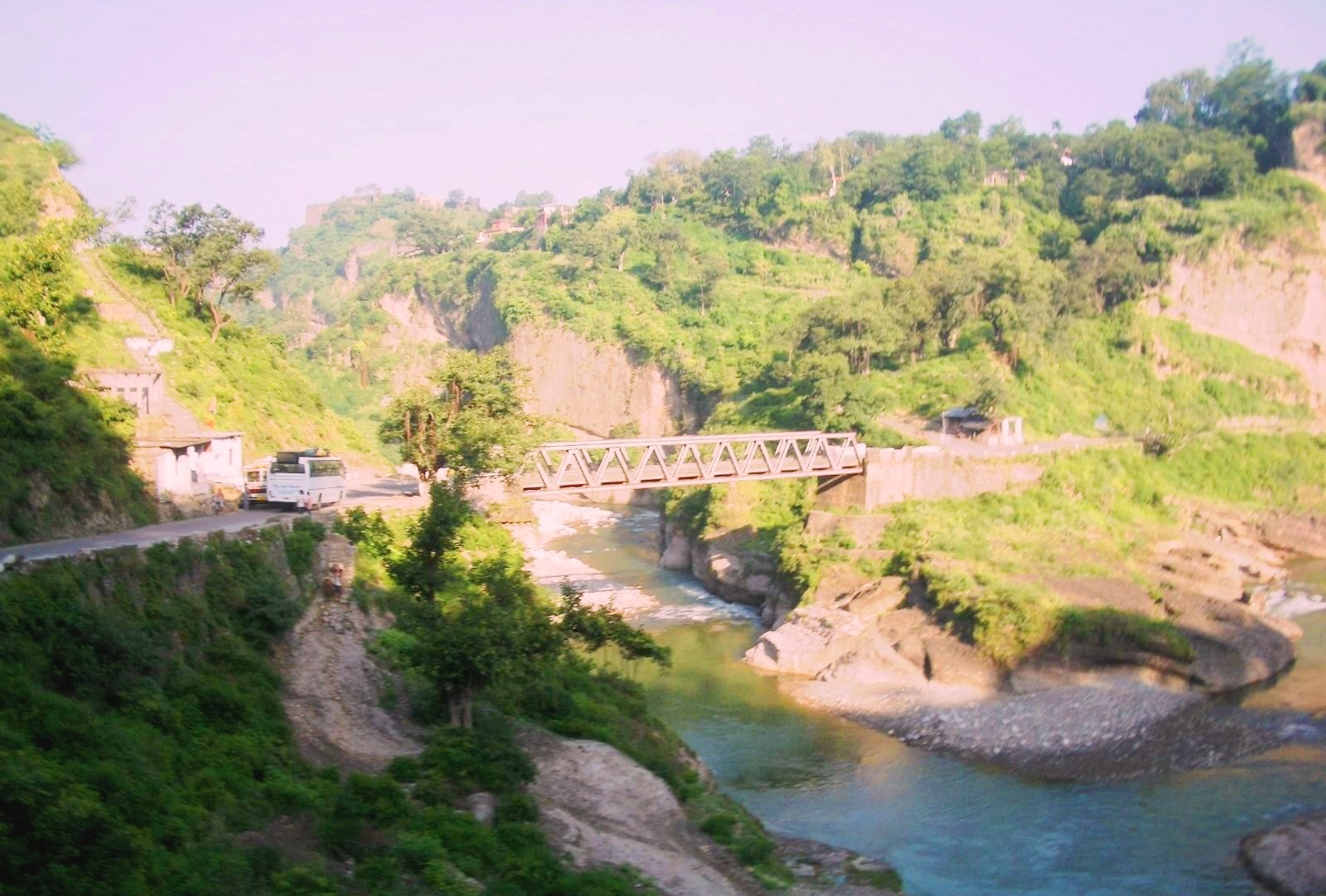Beas river on:
[Wikipedia]
[Google]
[Amazon]
The Beas River ( Sanskrit: ; Hyphasis in Ancient Greek) is a river in north India. The river rises in the Himalayas in central Himachal Pradesh, India, and flows for some to the
(1883) in later Sanskrit texts it's been called ''Vipāśā'', Yāska identifies it with Argrikiya. Ancient Greeks called it ''Hyphasis'' ( el, Ύφασης), Plinius called it Hypasis, an approximation to the vedic ''Vipāś''. Other classical names are Hynais, Bipasis, Bibasis. In modern times it has also been called Bias or Bejah.




 The Beas River marks the easternmost border of Alexander the Great's conquests in 326 BC. It was one of the rivers which created problems in Alexander's invasion of India. His troops mutinied here in 326 BC, refusing to go any further; they had been away from home for eight years. Alexander shut himself in his tent for three days, but when his men did not change their desires he gave in, raising twelve colossal altars to mark the limit and glory of his expedition.
According to the ''Kavyamimansa'' of Rajasekhara, the kingdom-territories of the Gurjara-Pratihara monarch Mahipala I extended as far as the upper course of the river Beas in the north-west.
In the 20th century, the river was developed under the Beas Project for irrigation and
The Beas River marks the easternmost border of Alexander the Great's conquests in 326 BC. It was one of the rivers which created problems in Alexander's invasion of India. His troops mutinied here in 326 BC, refusing to go any further; they had been away from home for eight years. Alexander shut himself in his tent for three days, but when his men did not change their desires he gave in, raising twelve colossal altars to mark the limit and glory of his expedition.
According to the ''Kavyamimansa'' of Rajasekhara, the kingdom-territories of the Gurjara-Pratihara monarch Mahipala I extended as far as the upper course of the river Beas in the north-west.
In the 20th century, the river was developed under the Beas Project for irrigation and

Sutlej River
The Sutlej or Satluj River () is the longest of the five rivers that flow through the historic crossroads region of Punjab in northern India and Pakistan. The Sutlej River is also known as ''Satadru''. It is the easternmost tributary of the Ind ...
in the Indian state of Punjab. Its total length is and its drainage basin is large.
As of 2017, the river is home to a tiny isolated population of the Indus dolphin
The Indus river dolphin (''Platanista minor''), also known as the ''bhulan'' in Urdu and Sindhi, is a species of toothed whale in the family Platanistidae. It is endemic to the Indus River Basin of Pakistan and northwestern India. This dolphin w ...
.
Etymology
Veda Vyasa, the author of Indian epic Mahabharata, is the eponym of the river Beas; he is said to have created it from its source lake, the Beas Kund. Before Veda Vyasa, the Vipasa river was known as Saraswati. Rishi Vashishta, the great grandfather of Vyasa tried to jump into this river from an overlooking hillock, to sacrifice his soul. He tied himself with several cords to drown himself. However, the river altered form to become a sandbed, saving him. And in this course, the cords got broken, so Vashishta named the river Vipasa, which means cord-breaker. On account of this incident, the great Rishi opted to settle near the river, and made it a residence for some years. Thereby, it became known as Vashisht (after Vashishta). We can find Vashishta Brahmarishi Temple in this village.Rig-veda
The ''Rigveda'' or ''Rig Veda'' ( ', from ' "praise" and ' "knowledge") is an ancient Indian collection of Vedic Sanskrit hymns (''sūktas''). It is one of the four sacred canonical Hindu texts (''śruti'') known as the Vedas. Only one S ...
calls the river ''Vipāś'', which means unfettered,
Müller, Max.br>''India: what Can it Teach Us?: A Course of Lectures Delivered Before the University of Cambridge''(1883) in later Sanskrit texts it's been called ''Vipāśā'', Yāska identifies it with Argrikiya. Ancient Greeks called it ''Hyphasis'' ( el, Ύφασης), Plinius called it Hypasis, an approximation to the vedic ''Vipāś''. Other classical names are Hynais, Bipasis, Bibasis. In modern times it has also been called Bias or Bejah.
History




 The Beas River marks the easternmost border of Alexander the Great's conquests in 326 BC. It was one of the rivers which created problems in Alexander's invasion of India. His troops mutinied here in 326 BC, refusing to go any further; they had been away from home for eight years. Alexander shut himself in his tent for three days, but when his men did not change their desires he gave in, raising twelve colossal altars to mark the limit and glory of his expedition.
According to the ''Kavyamimansa'' of Rajasekhara, the kingdom-territories of the Gurjara-Pratihara monarch Mahipala I extended as far as the upper course of the river Beas in the north-west.
In the 20th century, the river was developed under the Beas Project for irrigation and
The Beas River marks the easternmost border of Alexander the Great's conquests in 326 BC. It was one of the rivers which created problems in Alexander's invasion of India. His troops mutinied here in 326 BC, refusing to go any further; they had been away from home for eight years. Alexander shut himself in his tent for three days, but when his men did not change their desires he gave in, raising twelve colossal altars to mark the limit and glory of his expedition.
According to the ''Kavyamimansa'' of Rajasekhara, the kingdom-territories of the Gurjara-Pratihara monarch Mahipala I extended as far as the upper course of the river Beas in the north-west.
In the 20th century, the river was developed under the Beas Project for irrigation and hydroelectric
Hydroelectricity, or hydroelectric power, is electricity generated from hydropower (water power). Hydropower supplies one sixth of the world's electricity, almost 4500 TWh in 2020, which is more than all other renewable sources combined and ...
power generation purposes. The second-phase Pong Dam was completed in 1974 followed by the first-phase upstream, Pandoh Dam in 1977. The Pong Dam served initially to primarily provide irrigation below Talwara but was soon developed as well for power generation; its power station has a 360 MW installed capacity. The Pandoh Dam diverts the river through a system of tunnels and channels to the 990 MW Dehar Power Station on the Sutlej River
The Sutlej or Satluj River () is the longest of the five rivers that flow through the historic crossroads region of Punjab in northern India and Pakistan. The Sutlej River is also known as ''Satadru''. It is the easternmost tributary of the Ind ...
, connecting both rivers.
The Shahnehar canal takes off from the Shahnehar barrage/headwork which is located just downstream of Pong dam to supply water for irrigation needs and four cascading power houses at the canal drops before releasing water further downstream in the Beas river. These power stations, named Mukerian hydel (12 units), has 207 MW total generating capacity.
At the confluence with the Sutlej
The Sutlej or Satluj River () is the longest of the five rivers that flow through the historic crossroads region of Punjab in northern India and Pakistan. The Sutlej River is also known as ''Satadru''. It is the easternmost tributary of the Ind ...
river, Harike barrage was constructed to divert the combined water flows of both rivers to irrigation canals to serve Rajasthan and Punjab areas.
Course
The river rises above sea-level on the southern face of Rohtang Pass in Kullu. It traverses the Mandi District and enters the Kangra District at Sandhol, above sea-level. During its lower course the Beas is crossed by numerous ferries, many of which consist of inflated skins (darais). Near Reh in Kangra District it divides into three channels, which reunite after passing Mirthal, above sea-level. On meeting the Sivalik Hills in Hoshiarpur, the river sweeps sharply northward, forming the boundary with Kangra District. Then bending round the base of the Sivalik Hills, it takes the southerly direction, separating the districts of Gurdaspur and Hoshiapur. After touching the Jalandhar district for a short distance, the river forms the boundary betweenAmritsar
Amritsar (), historically also known as Rāmdāspur and colloquially as ''Ambarsar'', is the second largest city in the Indian state of Punjab, after Ludhiana. It is a major cultural, transportation and economic centre, located in the Majha r ...
and Kapurthala. Finally the Beas joins the river Sutlej
The Sutlej or Satluj River () is the longest of the five rivers that flow through the historic crossroads region of Punjab in northern India and Pakistan. The Sutlej River is also known as ''Satadru''. It is the easternmost tributary of the Ind ...
at the south-western boundary of Kapurthala district of Punjab after a total course of . The chief tributaries are Bain, Banganga, Luni and Uhal.
The Sutlej continues into Pakistani Punjab
Punjab (; , ) is one of the four provinces of Pakistan. Located in central-eastern region of the country, Punjab is the second-largest province of Pakistan by land area and the largest province by population. It shares land borders with the ...
and joins the Chenab River at Uch near Bahawalpur to form the Panjnad River; the latter in turn joins the Indus River
The Indus ( ) is a transboundary river of Asia and a trans-Himalayan river of South and Central Asia. The river rises in mountain springs northeast of Mount Kailash in Western Tibet, flows northwest through the disputed region of Kashmir, ...
at Mithankot.
The water of the Beas river is allocated to India under the terms of the Indus Waters Treaty between India and Pakistan. The mean annual flow is 14.203 million acre feet (MAF).
Tragedy
On 8 June 2014, 24 engineering students and one tour operator drowned when the flood gates of the Larji dam were opened.
Pollution
On May 17, 2018, countless number of fishes and other aquatic animals were found dead in Beas river due to release of molasses from a sugar mill situated on its shore at Kiri Afgana village in Gurdaspur district. Locals have noted that the river color has changed to rust brown and dead fishes were floating in the river. Punjab Pollution Control Board have ordered the closure of the factory and an enquiry has been initiated. Besides sealing, the sugar mill has been charged a fine of Rs. 25 lakh for this negligence.References
{{Authority control Rigvedic rivers Rivers of Punjab, India Tributaries of the Indus River Rivers of Himachal Pradesh Indus basin Rivers of India Rivers in Buddhism